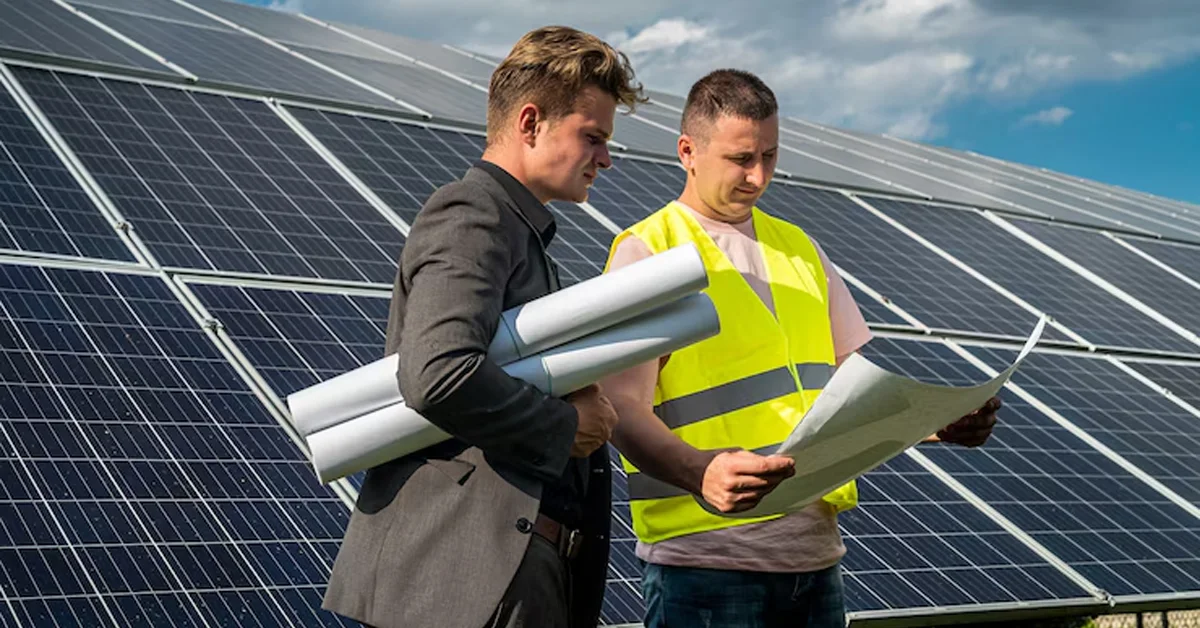Switching to solar energy is essential for energy independence and long-term cost savings. However, the installation process involves multiple steps that require careful planning and execution to ensure efficiency and reliability. A well-installed system maximizes energy production, adheres to safety standards, and integrates seamlessly with the home’s electrical system. Homeowners rely on contractors to handle installation complexities, from securing permits to mounting and connecting the panels to the power grid. Understanding how contractors manage each process phase helps homeowners feel confident about their investments. We will explore how residential solar contractors ensure a smooth installation process, making the transition to solar power hassle-free and efficient.
Ways residential solar contractors ensure a smooth installation process
Conducting a Comprehensive Site Evaluation
Before installation begins, a contractor conducts a thorough site evaluation to determine the home’s solar potential. This involves assessing the roof’s condition, orientation, and shading factors that could impact energy production. The roof must be structurally sound to support the weight of the solar panels for decades. Repairs may be necessary before installation can proceed if there are any signs of damage or aging materials. The contractor also measures the available roof space to determine the optimal placement of panels. Shade analysis is another crucial part of the evaluation. Trees, nearby buildings, or other obstructions can reduce sunlight exposure, affecting system efficiency. Using advanced tools such as solar pathfinders or drone imaging, the contractor identifies potential shading issues and designs a layout that minimizes energy loss. By carefully evaluating these factors, contractors create a system tailored to the home’s energy needs while ensuring long-term performance.
Handling Permits and Utility Approvals
A smooth solar installation process requires compliance with local building codes and utility regulations. Contractors take responsibility for obtaining the necessary permits before installation begins, preventing potential delays or legal complications. Different regions have specific requirements regarding electrical work, structural modifications, and interconnection with the grid. Failing to comply with these regulations can result in fines or system shutdowns. Contractors handle the paperwork, submit applications to the appropriate authorities, and ensure the project meets all necessary guidelines. In addition to permits, approval from the utility company is required before the solar system can be connected to the grid. This ensures that the system does not interfere with the existing power supply and allows homeowners to receive credit for excess electricity sent back to the grid. Since permit approvals and utility interconnections can take time, contractors begin these processes early, ensuring that the system is ready for activation as soon as the installation is complete.
Using High-Quality Equipment and Materials
The quality of solar panels, inverters, and mounting hardware is significant in the system’s efficiency and durability. Contractors ensure a smooth installation by selecting reliable components that provide long-term performance. Inferior materials can lead to frequent maintenance issues, reduced energy production, and a shorter lifespan. Contractors source panels from reputable manufacturers, ensuring they have high efficiency and durability to withstand harsh weather conditions. Inverters, which convert solar energy from direct current (DC) to alternating current (AC) for home use, must also be carefully chosen based on system size and energy requirements. Proper racking and mounting systems are essential for securing panels and preventing wind or heavy rain damage. Contractors use high-quality fasteners and sealing techniques to avoid leaks or structural issues over time. By choosing durable and efficient materials, contractors help homeowners achieve maximum energy savings while minimizing maintenance concerns.
Executing a Safe and Efficient Installation
Once all preparations are complete, the installation begins with mounting the racking system onto the roof. Contractors carefully position these structures to optimize sunlight exposure while maintaining structural integrity. Proper alignment is crucial to prevent water pooling or excessive wind resistance. After the racking system is secured, solar panels are attached using strong, weather-resistant fasteners. Electrical wiring is then connected, linking the solar panels to the inverter and the home’s electrical panel. This step requires precision to ensure that the system operates safely and efficiently. Poor wiring can lead to energy loss, power fluctuations, or electrical hazards. Contractors follow strict safety protocols to prevent short circuits, overheating, or improper grounding. A smooth installation also involves integrating the system with the home’s electrical supply while ensuring compatibility with backup power sources or battery storage. Every component is installed according to industry standards, reducing the risk of performance issues in the future.
Conducting Thorough System Testing and Inspections
Contractors perform detailed testing before the system is activated to ensure everything functions correctly. This includes checking voltage levels, inverter efficiency, and overall energy output. Testing helps identify wiring issues, panel misalignment, or other potential problems impacting performance. Contractors also ensure that safety mechanisms, such as circuit breakers and grounding systems, are correctly configured to prevent electrical hazards. In many cases, a final inspection by local authorities or utility representatives is required before the system can be connected to the grid. Contractors coordinate these inspections, ensuring that all components meet regulatory standards. If any adjustments are needed, they address them promptly to avoid unnecessary delays. By performing rigorous testing and inspections, contractors ensure that homeowners receive a fully functional and compliant solar energy system that delivers the expected benefits without complications.
Providing Homeowners with System Training and Support
After installation and approval, contractors guide homeowners on monitoring and maintaining their solar energy system. This includes explaining how to track energy production using monitoring apps or in-home displays. Understanding how the system performs helps homeowners detect any unusual changes in output that may require attention. Contractors also provide maintenance recommendations, such as periodic cleaning of panels to remove dust or debris that could affect efficiency. While solar systems are designed for minimal maintenance, occasional inspections help ensure long-term performance. Contractors also inform homeowners about warranty coverage and whom to contact in case of issues. Some offer ongoing support services, including performance check-ups and troubleshooting assistance. By providing precise system operation and maintenance guidance, contractors help homeowners maximize their energy savings and ensure their investment remains reliable for years.
Ensuring a Smooth Transition to Solar Energy
From the initial site assessment to system activation, contractors play a vital role in making the solar installation process seamless and efficient. Proper planning, quality materials, and precise execution contribute to a well-functioning system that meets energy needs and regulatory requirements. Handling permits, coordinating with utility companies, and conducting rigorous testing ensure the system is installed without unnecessary delays or complications. After installation, homeowners receive the guidance to monitor and maintain their systems, ensuring long-term benefits. A well-executed solar installation provides reliable energy savings, reduces dependence on traditional power sources, and enhances property value. With careful attention to every detail, contractors make the transition to solar energy smooth, efficient, and rewarding for homeowners.











